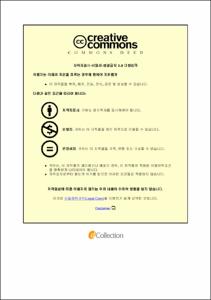활동이론을 적용한 기초자치단체 행정박물 관리 모순 분석
- Abstract
- 지방자치단체에서 생산·보유하는 행정박물은 행정적·역사적·문화적 가치 가 높음에도 불구하고, 실제 현장에서는 체계적 수집과 관리, 활용이 충분히 이루어지지 못하고 있다. 행정박물은 국새, 현판, 상장, 모형, 기념품 등 다양 한 유형의 형상기록물로서 단순한 행정 증거를 넘어 기관의 상징성과 역사성 을 드러내는 중요한 자료이다. 그러나 기초자치단체는 기록관 운영의 제도 기 반 취약, 담당 인력과 예산·보존공간의 한계, 조직 내 인식 부족 등 복합적인 구조적 제약으로 인해 행정박물의 누락, 방치, 관리 미비 현상이 반복되고 있다.
기존 행정박물 관리 연구는 대부분 중앙정부나 광역자치단체를 대상으로 이루어져 기초자치단체의 현실적 문제를 포착하지 못했다. 이에 본 연구는 A 광역자치단체 산하 기초자치단체를 중심으로 행정박물 관리업무의 실태를 분 석하고 체계적 개선방안을 모색하였다.
연구방법으로는 Engeström의 3세대 활동이론을 이론적 틀로 적용하여 행 정박물 관리 활동체계를 주체, 객체, 도구, 규칙, 공동체, 역할 등 6가지 구성 요소와 1~4차 모순으로 분석하였다. 10명의 기초자치단체 기록물관리 전문요 원을 대상으로 반구조화 심층면담을 실시하여 업무 경험과 활동체계 내 모순, 갈등을 심층적으로 탐색하였다.
연구결과, 행정박물의 수집·보존·활용 과정에서 각 구성요소별로 다양한 문제와 모순이 발견되었다. 주요 모순으로는 첫째, 1차 모순에서 행정박물의 가치 인식 부재에 따른 주체, 도구의 내적 긴장, 둘째, 2차 모순에서 담당자 와 처리과 간 인식 차이, 기록관리시스템의 미온적 활용 등 구성요소 간 충 돌, 셋째, 3차 모순에서 새로운 기록관리시스템 도입과 기존 업무방식 간의 저항, 보존 중심에서 활용 중심으로의 패러다임 전환 과정의 갈등, 넷째, 4차 모순에서 예산·인사·타 업무 활동체계와의 우선순위 충돌 등이 확인되었다.
특히 4차 모순이 해결되지 않으면서 다시 1차 모순을 심화시키는 순환적 회귀 구조를 발견하였으며, 이는 행정박물 관리 활동체계의 근본적 개선을 위 해서는 4차 모순의 우선적 해결이 필수적임을 시사한다.
개선방안으로는 예산 관리, 인사 관리, 타 업무 활동체계와의 협력 체계 구축을 통한 4차 모순 해결을 우선 과제로 제시하였다. 구체적으로는 행정박물 관리 전용 예산 법제화, 기록물관리 전문요원의 정규직 전환, 전문성 기반 업무 분장 체계 확립 등이 필요하다. 또한 법적·제도적 기반 강화, 지방기록 물관리기관 설치 의무화, 기록관리시스템과 중앙 플랫폼 간 연계성 강화, 업무 도구의 표준화·디지털화, 부서 간 협력체계 구축, 지속적 모니터링 체계 마련 등의 종합적 접근을 제안하였다.
본 연구는 기존의 중앙정부·광역자치단체 중심 연구에서 벗어나 기초자치 단체 현장의 실태와 목소리를 반영함으로써 행정박물 관리의 현실적 문제와 개선 방안을 입체적으로 제시하였다. 또한 활동이론을 기록관리 분야에 적용 하여 구조적 모순과 그 발전과정을 체계적으로 분석한 새로운 접근으로서 학문적·실무적 의의가 크다.|Despite their significant administrative, historical, and cultural value, administrative artifacts produced and retained by local governments are inadequately collected, managed, and utilized in practice. Administrative artifacts—including state seals, plaques, certificates, models, and commemorative items—represent diverse types of three-dimensional records that serve not merely as administrative evidence but as important materials revealing institutional symbolism and historicity. However, basic local governments face recurring issues of omission, neglect, and inadequate management of administrative artifacts due to complex structural constraints including weak institutional foundations for archives operation, limitations in personnel, budget, and storage space, and insufficient organizational awareness.
Existing research on administrative artifact management has primarily focused on central government or metropolitan governments, failing to capture the practical challenges faced by basic local governments. Therefore, this study analyzed the current state of administrative artifact management operations and sought systematic improvement measures, focusing on basic local governments under Metropolitan Government A.
The research methodology applied Engeström's third-generation Activity Theory model as a theoretical framework to analyze the administrative artifact management activity system through six components: subject, object, tools, rules, community, and division of labor, along with primary through quaternary contradictions. Semi-structured in-depth interviews were conducted with ten records management professionals from basic local governments to explore their work experiences and contradictions and conflicts within the activity system.
The research findings revealed various problems and contradictions in each component throughout the collection, preservation, and utilization processes of administrative artifacts. Major contradictions included: first, internal tensions in subjects and tools due to lack of value recognition for administrative artifacts in primary contradictions; second, conflicts between components such as perception gaps between managers and processing departments and lukewarm utilization of records management systems in secondary contradictions; third, resistance between the introduction of new records management systems and existing work methods, and conflicts during the paradigm shift from preservation-centered to utilization-centered approaches in tertiary contradictions; fourth, priority conflicts with budget, personnel, and other work activity systems in quaternary contradictions.
Particularly significant was the discovery of a cyclical regression structure where unresolved quaternary contradictions intensified primary contradictions, suggesting that priority resolution of quaternary contradictions is essential for fundamental improvement of the administrative artifact management activity system.
As improvement measures, the study proposed resolving quaternary contradictions through establishing cooperative systems with budget management, personnel management, and other work activity systems as the primary task. Specifically, this requires legislating dedicated budgets for administrative artifact management, converting records management professionals to regular positions, and establishing expertise-based task allocation systems. Additionally, comprehensive approaches were proposed including strengthening legal and institutional foundations, mandating the establishment of local records management institutions, enhancing connectivity between records management systems and central platforms, standardizing and digitalizing work tools, building interdepartmental cooperation systems, and establishing continuous monitoring mechanisms.
This study departed from existing research focused on central and metropolitan governments to reflect the actual conditions and voices of basic local government sites, thereby presenting realistic problems and improvement measures for administrative artifact management in a multidimensional manner. Furthermore, it holds significant academic and practical value as a novel approach that systematically analyzed structural contradictions and their developmental processes by applying Activity Theory to the records management field.
- Issued Date
- 2025
- Awarded Date
- 2025-08
- Type
- Thesis
- Files in This Item:
-
-
Download
 200000901720.pdf
기타 데이터 / 1.96 MB / Adobe PDF
200000901720.pdf
기타 데이터 / 1.96 MB / Adobe PDF
-
Items in Repository are protected by copyright, with all rights reserved, unless otherwise indicated.